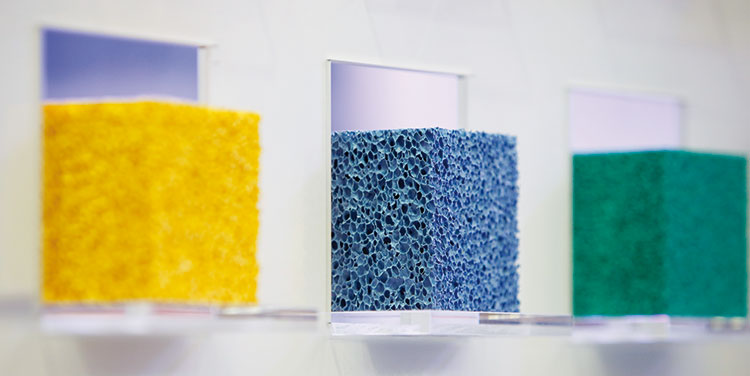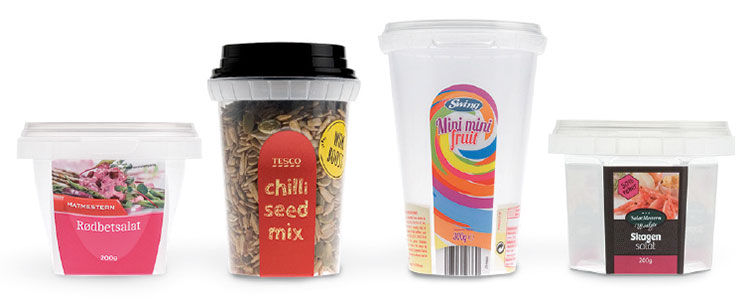The plastic packaging sector
Based on the classification used by the Istituto Italiano Imballaggio in their Packaging in figures publication, this analysis focuses on rigid packaging (bottles, flacons...) but also on laminated flexible packaging (shoppers, films, protective bubble wrap, etc.), with the exclusion of flexible converter packaging. Barbara Iascone

According to the assessments of Plastic Europe, based on data for 2016 (the latest available), demand for plastic in the 28 European 28 countries has reached about 50,000 t/000, 39.9% of which for production of packaging.
In terms of recycling, still at European level, around 27,100 t/000 of plastic were recycled in 2016, of which 16,700 t/000 from packaging.
In Italy, according to the latest CONAI data available but not yet final, in 2014, 42.1% of plastic packaging released for consumption was recycled.
The market: the preliminary figures
It is stressed that, at the time of writing this article, the data reported refer to the preliminary results of the sector.
The plastic packaging market, excluding converter flexibles, should register a growth rate of 3.5% in 2017, totalling 2,990 t/000.
As far as foreign trade is concerned, we see a growth trend of 4.8% for imports and a 3.7% increase for exports, which have returned to growth after the stagnation of the previous year.
Also in 2017, apparent consumption should close at +3.7%. In terms of turnover, it is estimated that the growth of the plastic packaging sector is 3%.
As regards the quotations of plastic raw material used to produce packaging, taken from the Milan Chamber of Commerce, in 2017 there were, as for other raw materials, significant increases and differentiated trends in the prices of plastic polymers: the price of nylon grew by 30%, that of PET by around 25%, polystyrene by 13% and the price of PVC by 8%. Polyethylene shows a drop (-9% on average).
Among the recycled plastic raw materials, only rPET registers double-digit growth rates in 2017 (+10.5%), with the others are stable or declining.
In this regard, a reminder that the recycled plastics and the bioplastics used to produce packaging are constantly increasing: if in 2017, the former grew by 7%, according to the data collected by European Bioplastics the latter (mainly for shoppers and wrapping films) could register a +50% in 2021, taking 2016 as a benchmark.

Types and sectors of use
Overall plastic packaging accounts for about 18% of total packaging production in Italy. On this count, it is useful to remember that this evaluation derives from the examination of values expressed in tons: plastic packaging, which comes in the “light packaging” category, hence has a much lower weight than other materials. This is why, according to an additional estimate, the share may vary slightly, reaching 24% of the total.
Plastic packaging is subdivided into three macro categories:
- non-laminated flexible packaging, of which there is a 46.9% share (films and bags, therefore excluding the converter flexibles that will also be analyse in this same issue),
- rigid packaging (bottles, drums, crates, pallets), with a 44.4% share;
- accessories (straps, caps, chips, plates, adhesives, etc.).
• Plastic packaging is widely used both in food (fresh and preserved food, beverages) and in non-food (technical products, machinery, etc.).
The food & beverage area continues to register the most consistent presence of plastic packaging (76.3%), of which food absorbs 56.4% and beverages 19.9%.
In Italy too this type of packaging has found new vigor thanks to the emerging consumption of ready-to-eat foods (an expanding sector which in 2017 grew by 12%). On the totality of plastic packaging used in the food sector (excluding beverages), 34% is ascribed to the packs intended for convenience food (trays and bags).
• Another important area of use is that of chemical products (inks, colors, lubricants, etc.), where plastic accounts for a share of 6.9%, while cosmetics and perfumery account for 3.5%.
13.3% is attributable to plant engineering (handling, mechanical, electromechanical, textile, etc.)
It should be underlined that, from one year to the next, the quotas referring to this type of packaging vary according to the performance of the various sectors of use. In 2017, for example, the chemical sector performed well, positively influencing the packaging trend used to package the products of that sector.
Barbara Iascone
Istituto Italiano Imballaggio

















